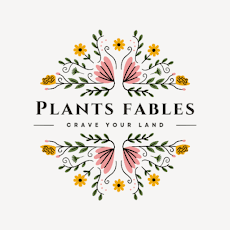Potting soil for houseplants: which is the best?
Use leftover potting soil from the garden for your houseplants? Read this article to find out whether this is a good idea and what you should pay attention to.
To the point
Garden potting soil is generally suitable
Should meet certain requirements
Prefer peat-free soil over peat-containing substrates
Some special earths are best
Potting soil for houseplants
Finding the perfect substrate for houseplants is often a challenge. It is generally possible to use potting soil that you use for the garden for houseplants. However, it should not be cheap soil with inferior ingredients.
Disadvantages of cheap potting soil:
very solid over time
partly contains coarse fibers, pieces of branches and weed seeds
collapses, encloses the roots
Air circulation becomes significantly more difficult
The result is a permanently moist substrate
Nutrient absorption impaired
potting soil, but rather pay attention to high quality, which is also suitable for most houseplants.
Tip: Put potting soil briefly in the oven before using to sterilize the soil.
Requirements for potting soil
Cheap potting soils are usually of poor quality. They usually contain fertilizer with a variety of fiber, which accumulates as salt in the substrate and can promote drought stress.
A good potting soil, which can be used for most houseplants, should have the following properties:
light, airy and crumbly structure for ventilation of the root system
dimensionally stable
rich in humus, low salt content
contains peat substitutes such as wood or coconut fiber
sufficient proportions of water-storing elements
Storage of nutrients available
should contain sustained release fertilizer for 8-12 weeks
favorable pH value for houseplants 5.5 to 7.0
Notice:
In order to protect the environment, you should generally avoid potting soil containing the additive peat. The trade now offers high-quality peat-free or peat-reduced potting soil . When making your purchase, it is best to look for the term “peat-free”.
Special soils for orchids
very coarse structure of the earth , structurally stable and poor in nutrients
ideally made from high-quality oinien bark
pH between 5.0 and 6.8
Doesn't break down as quickly as bark from native tree species
Cactus and succulent soil
nutrient-poor, airy substrates, with some sand for a loose structure
reliable water and nutrient storage for longer periods of time
Frequent water supply not required
Addition of clay or clay for slightly acidic pH
Green plant nd palm soil
enriched with compost and other organic materials
more nutrients than conventional potting soil
rich in nitrogen, phosphorus and potassium
pH value adjusted as required, acidic or neutral
Tip:
It is suitable for evergreen houseplants with high nutrient requirements. Good green plant or palm soil should not be contaminated with heavy metals or toxic chemicals.
Is there potting soil that is suitable for all houseplants?
Due to the nutrients it contains, high-quality potting and houseplant soil is suitable for the majority of all houseplants. As already mentioned, exceptions are cacti, succulents, orchids and green plants.
When should potting soil be renewed?
Nutrient requirements vary depending on the plant species. As a rule, houseplants should be moved to fresh substrate and, if necessary, a larger pot about every two years. Then the pot is usually heavily rooted and the substrate is leached. Older plants can stay in the same pot for up to five years as long as they are fertilized regularly and do not form as much root mass.
Can potting soil go bad?
As long as it is stored in a closed bag in a cool and dry place, the quality is not affected as long as it is not stored for years. If the bag has damage such as small holes, the soil will dry out over time. It can still be used in the garden without any problems. For houseplants, simply mix in fresh soil.







0 Comments